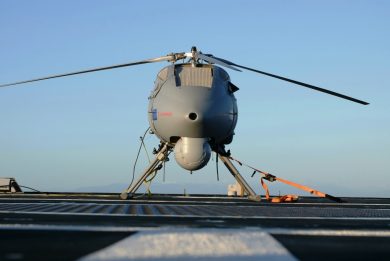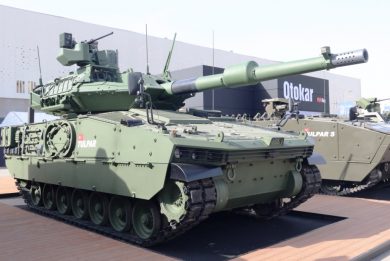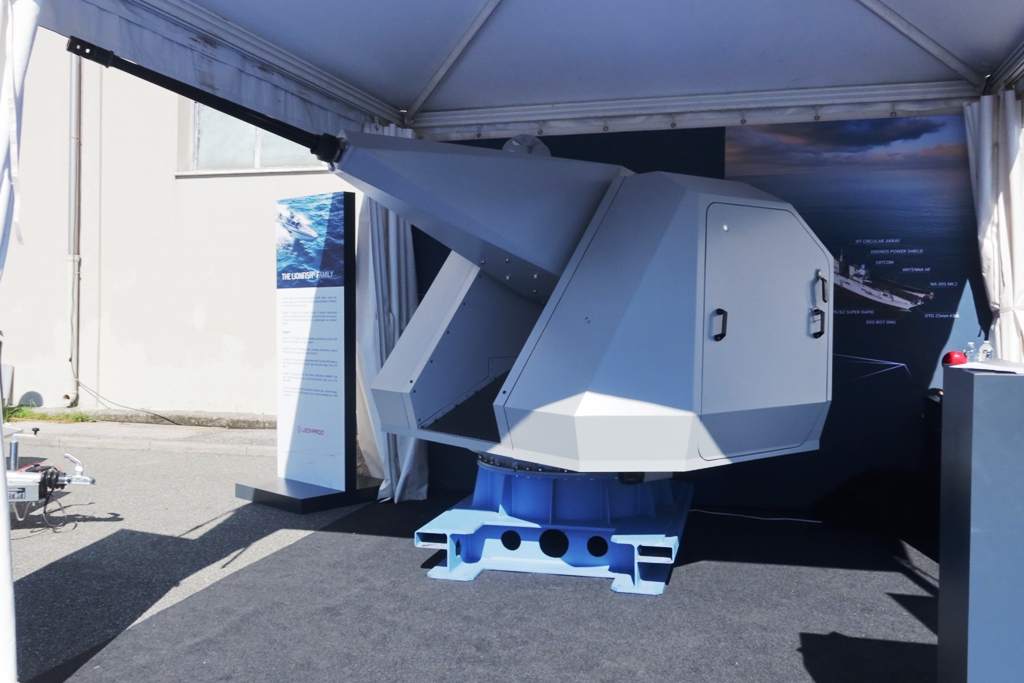
Seafuture 2025 – Leonardo Lionfish 30 is now a product
Unveiled two years ago at the La Spezia exhibition as a mock-up, the Lionfish 30 naval turret armed with the company X-Gun 30 mm cannon, is now a product and is available on the market
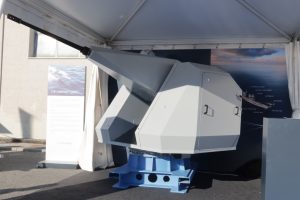
At Seafuture 2025 Leonardo showcased the first production item which will be delivered to the Italian Navy. The Lionfish 30 is fitted with the Leonardo X-Gun, which was already described by EDR On-Line in previous articles. “The Lionfish 30 is unique because it features a completely innovative, extremely simple loading system that allows the turret to host a large number of ammunition, superior to that of competing turrets. The system is fully encased, and has therefore a low radar cross section,” Luca Perazzo, Deputy Managing Director of Leonardo Defence Business, part of the Electronic Division, said during the system presentation, underlining that the Lionfish 30 is a completely new system because the gun, the turret, the ammunition and the fire control system are all new.
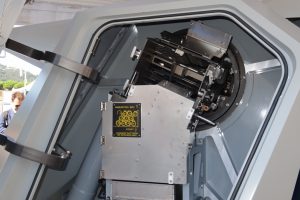
As said, one of the main peculiarities of the new Lionfish 30 is the ammunition management system which is contained within the turret, so that flexible ammunition chutes are not exposed to the elements. “The ammunition loading system is absolutely innovative and unique,” Perazzo explained adding that two trays contain each one 100 linked 30×173 mm ammunition, some more being available in the chute, so the ammo available is over 200 rounds. Ammunition is loaded through a hatch that opens on the left side of the turret, while on the right side another hatch protects servos and on-board electronics.
The X-Gun is a dual feed weapon, therefore the Lionfish 30 can shoot different types of rounds, a key one being the air burst munition. “The weapon will be using ABM ammunition that we are developing with KNDS Ammo Italy, specifically developed for the anti-drone mission,” Luca Perazzo pointed out. The X-Gun has three firing modes, single shot, programmed burst, and continuous burst, up to a maximum of 200 rounds per minute.
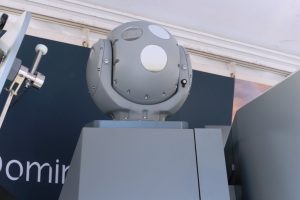
The turret is equipped with a Leonardo Janus-D fully digital optronic gimbal with Nx360°. “This stabilized panoramic optronic system has both long-range observation and detection as well as engagement capabilities, thanks to an extremely sophisticated video tracking system. It uses the same basic electronics and single-camera interface typical of the Lionfish family, of which this is the latest addition, the big brother.” This optronic system ensures day DRI [1] of 9.5/4.8/3 km, which become 12/6/3.5 km with the cooled MWIR thermal camera. A laser rangefinder capable to measure distances up to 10 km completes the system sensors suite.
In addition to the tracking optics, the Lionfish 30 is also equipped with ballistic calculation algorithms based on artificial intelligence, which predict the threat’s movements and can therefore track and target. The system first identifies the type of drone and evaluates the movements, and based on existing libraries and preconfigured analysis it evaluates what the optimal fragments map is to maximize the effect of the burst.
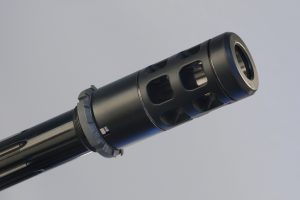
Although no exact numbers were provided, EDR On-Line understood that the over 200 rounds ready-to-fire rounds available allow multiple engagements even against incoming swarms of drones. The X-Gun inherent accuracy, its maximum operational range is 3.5 km while in the C-UAS role ranges considered are of 1+ km, and that of the aforementioned fire control system is key in reducing the number of rounds for each fire mission, according to Leonardo, the system AI-algorithms also ensuring machine learning capacity that allows to further improve system performances based on operational experience, adding more data to the libraries. Without detailing more, “the cost to take down a single drone is low,” Perazzo stated.
With all the ammo and electronics in the mount, the Lionfish 30 is not intruding into the ship, allowing easy integration, while the sensors suite allows using it as a stand-alone system. Of course it can also be integrated with the ship’s fire control centre. The turret has an elevation arc between -20° and +70°, and is optimised for counter-UAS missions. In azimuth the Lionfish 30 can rotate ±155°. Elevation and training speed are respectively 90°/s and 140°/s, with the same acceleration, 220°/s. The turret with gun but without ammo has a mass of 1,450 kg.
The first production unit seen at the La Spezia exhibition is aimed at the Italian Navy PPX, which is due to be delivered in 2027. Leonardo intends delivering the first two systems to the launch customer within 2025. “It will then become the standard medium-calibre weapon of the Italian Navy, the service planning o install it on the FREMM EVOs and the DDGs. As for export, we already have contracts with navies in North Africa and Central America, and it has already been selected by a Middle East customer as well,” Perazzo added without detailing the nations involved, adding that such early success was a surprise even for the company, underlining however how much the system answers the need for one of the key current needs, that for C-UAS systems.
The Lionfish will be the smallest calibre system in a layered defence against UAVs, which will also include the 76 mm naval gun, the latter being also high effective against unmanned surface vessels. “Typically, on major combatant ships such as frigates and corvettes, the Lionfish 30 will ensure defence in the last kilometre,” Luca Perazzo explained.
The Lionfish 30 is mostly build at the Leonardo plant in Brescia, with the exception of the barrel which is produced at the La Spezia facility, where the Leonardo barrel production capacity is being increased. In today world production capacity is a key issue. “We have currently launched an initial batch of 30 Lionfish 30, which we will need to produce in just over 12 months, as we have a series of simultaneous orders from both Italy and abroad. As for X-Gun cannons, we are currently targeting cannon a production rate well over 200 units per year, as this weapon interest both the Italian Navy and the Italian Army, as well as foreign countries,” Luca Perazzo said.
Looking at the future, Leonardo is considering land applications for its naval C-UAS turret. Different solutions are being considered, and even the 76 mm naval gun, which in the late 1980s was the main effector of the Otomatic tracked self-propelled air defence system developed by then Oto Melara, could find applications for C-UAS missions on land, EDR On-Line understood. “For the time being we are considering two solutions for the Lionfish 30 in a terrestrial application, one based on a truck and one on a tracked chassis,” Luca Perazzo said concluding the new system presentation.
Photos by P. Valpolini
[1] DRI for Detection, Reconnaissance, Identification

